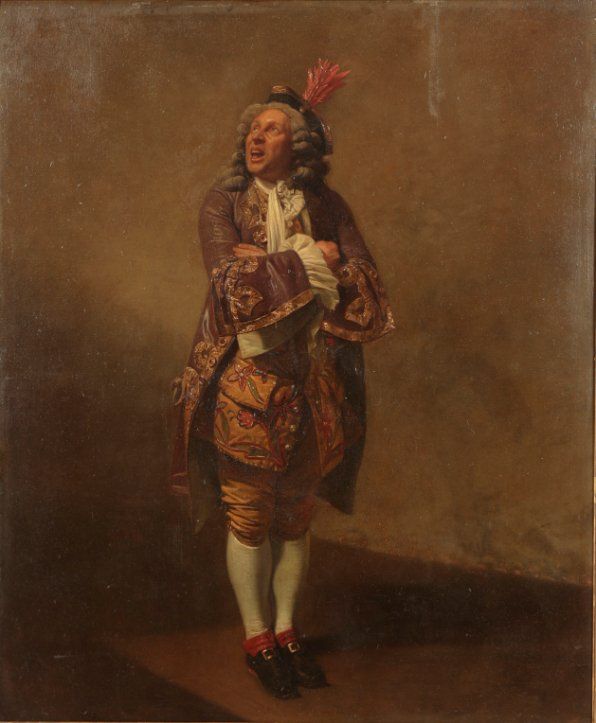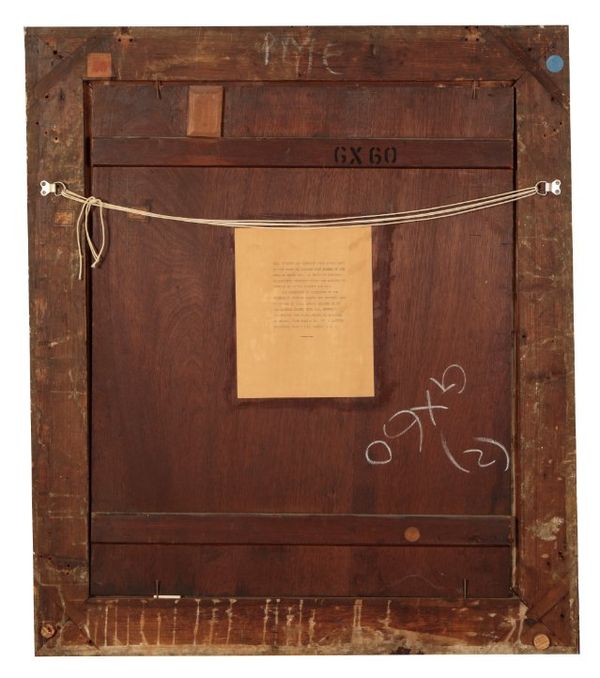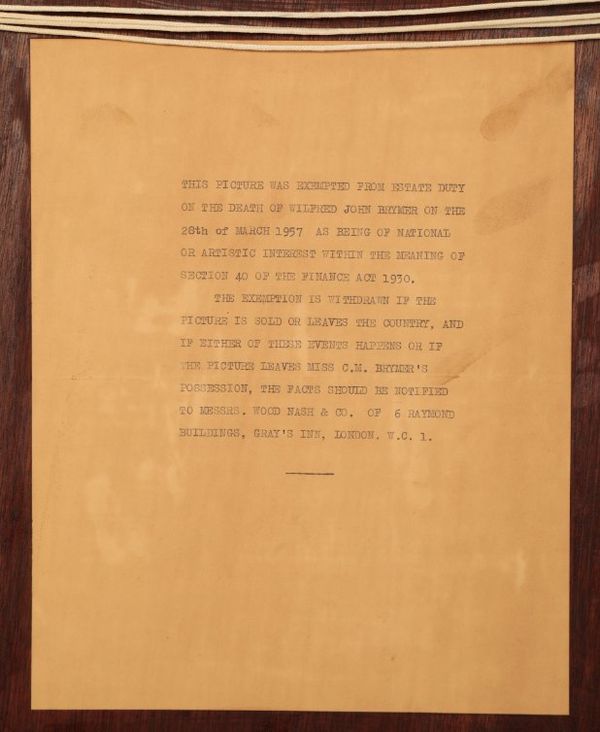painted in 1796, oil on mahogany panel, 76.2 x 63.5 cm; 30 x 25 inches, in its original eighteenth-century carved frame
| Estimate: | £80,000 - £150,000 |
| Hammer price: | £330,000 |
Provenance: Johann Zoffany;
Zoffany sale, Robins, 9th
May 1811, lot.89;
Henry Harris;
Harris sale, Robins, 12th
July 1819, lot.6;
Thomas
Wilkinson (1762-1837);
Jane Anne Brymer (1804-1870), daughter of the above;
William Ernest Brymer (1840-1909) of Ilsington House;
Wilfred John Brymer (1883-1957); son of the above
Constance Mary Brymer (1885-1963), sister of the
above;
John Hanway Parr Brymer (1913-2005); nephew of the
above;
Maureen Brymer (1924-2021) by inheritance
Exhibited: London, Royal Academy, 1796,
no.85 (‘Mr Townsend as the beggar in the pantomime of Merry Sherwood’);
London, Royal Academy, Exhibition
of Works by the Old Masters, 1893, no.44 (‘An Actor’)
Literature: Victoria Manners and George
Charles Williamson, John Zoffany RA: His Life and Works 1735-1810,
London, 1920, p.276;
Mary Webster, Johann Zoffany, New Haven and London, 2011, p.585
Martin Postle, Johann Zoffany RA: Society Observed, exh. cat., New Haven (Yale Center for British
Art), pp.44-45, reproduced
This little-known theatrical
portrait is one of the finest works by Johann Zoffany from the end of his career.
Depicting the comic actor Edward Townsend singing ‘The Beggar’, a song by the
playwright John O’Keeffe written and set to music by William Reeve for Merry
Sherwood, or Harlequin Forester by William Pearce, an entertainment
on the theme of Robin Hood. Zoffany captures Townsend with his mouth open wide
in the midst of the song. This unusually animated portrait is rendered with
Zoffany’s characteristic attention to the minute details of costume and
physiognomy. Zoffany was a pioneer of theatrical portraiture, where individual
actors are portrayed in the roles for which they were most celebrated, it is a
genre which was uniquely developed in Britain in the eighteenth century. Here
the comic singer Edward Townsend is shown on stage singing in the midst of
William Pearce’s popular pantomime Merry Sherwood. But rather than
merely being an illustration of the entertainment, Zoffany paints a portrait of
Townsend en role, exploiting a complex layer of relationships between audience
and actor, viewer and painting. Zoffany’s theatrical portraits are regarded as
some of his most innovative and beguiling works and only a handful remain in
private collections, of which this is one of the finest. Preserved in
outstanding condition and painted on a mahogany panel, this portrait has not
been on the open market since the early nineteenth century and has not been
exhibited in public since 1893.
By 1796 Johann Zoffany was at
the height of his powers as a portrait painter, particularly paintings of
complex conversation groups and interiors scenes, rich with domestic and
decorative details. Recently returned from a period spent in India, where he
had completed a series of remarkable images of European and Indian sitters,
including Colonel Maudaunt’s Cock Match now in the Tate, London. Zoffany
re-established himself as one of London’s leading portrait painters. Zoffany
had found success in London in the 1760s producing a series of remarkable and
hugely popular portraits of famous actors. Zoffany worked particularly closely
with David Garrick, commemorating his most celebrated theatrical roles in a
series of largely comic portraits.
The comic singer Edward
Townsend sang The Beggar at the first performance of Pearce’s popular pantomime
Merry Sherwood at Covent Garden on 21 December 1795. Townsend made the
song popular and it became a favourite peace in his repertoire: he sang it at
his benefit on 20 May 1796, and was still rendering it at Covent Garden in June
1800. The entertainment, and Townsend’s performance, were an immediate
sensation. The success of the pantomime may well have prompted Zoffany to paint
Townsend and to submit the painting for the annual exhibition at the Royal
Academy in 1796, where the painting is described in the exhibition catalogue
as: ‘Mr Townsend in the Beggar, full of expression and character, and a
striking resemblance.’ The painting was hugely admired by contemporaries at the
annual exhibition. The critic Anthony Pasquin noted: ‘Mr Townsend, the Comedian in
the Character of a Beggar. Zoffany. This portrait is eminently characteristic,
with a strict adherence to the minutiae of the stage dress. The countenance
partakes of all the muscular whim of the original contour and expression of
this supplicating visage.’
Robin Simon has noted that in his theatrical portraits, such as this, Zoffany’s: ‘nuanced approach enabled him to create a distinctive effect: that of depicting the actors both in and out of character at the same time. This duality lies at the heart of his achievement; but it also reflects the contemporary practice of a number of leading comic actors who, in a tradition that survives in the British pantomime, would interact, sometimes even verbally, with the audience during performance.’[1] There is a sense that in the present portrait Zoffany has caught Townsend totally absorbed in his performance. It is this duality which made Zoffany’s theatrical portraits so publicly successful.
The present painting has not been publicly exhibited since 1893, when it was lent to the Royal Academy’s annual exhibition of old master paintings, as a consequence it has remained largely unknown to scholars. Mary Webster, in her authoritative 2011 monograph on Zoffany, assumed the painting was missing. The present portrait remained in Zoffany’s collection and was included in his posthumous auction in 1811. It was acquired in 1820 by Thomas Wilkinson the son of Jacob Wilkinson who was one of Zoffany’s most important supporters. A Director of the East India Company, Wilkinson acquired The Watercress Girl by Zoffany in 1780 and its pendant, The Flower Girl. Zoffany also painted his portrait in 1782 (The Chequers Trust) and Wilkinson, in turn, was one of those who supported Zoffany’s petition to travel to India. The painting passed to Thomas Wilkinson’s daughter Jane Anne, who married the Reverend William Thomas Parr Brymer, the painting has remained by descent in the Brymer family ever since.




